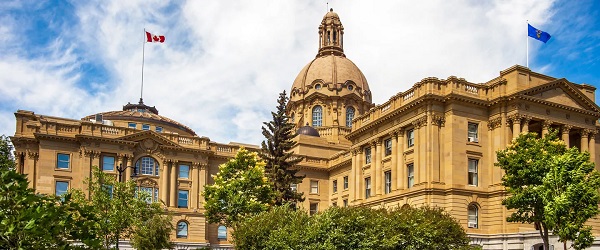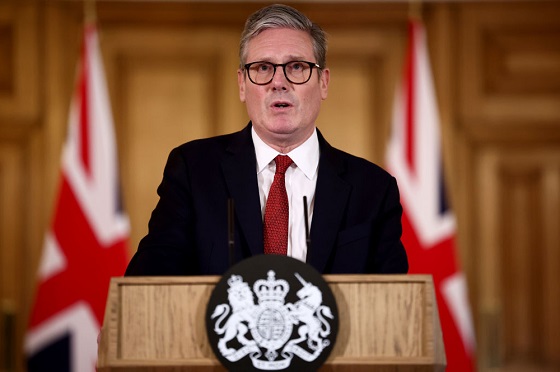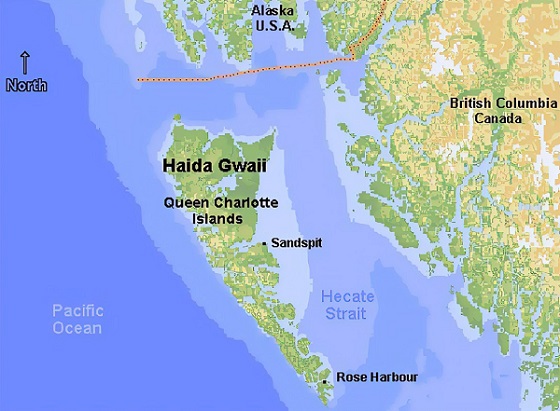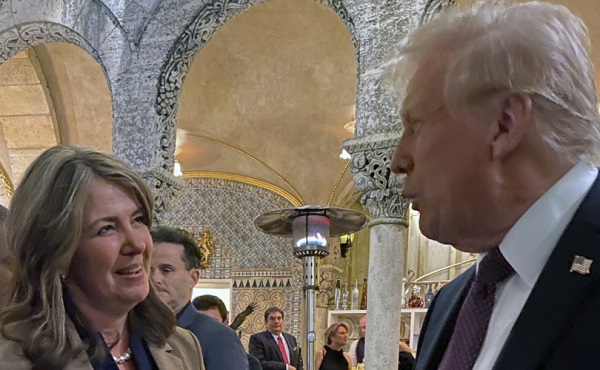Alberta
Smith government should create stricter rules for Heritage Fund to ensure annual deposits

From the Fraser Institute
By Tegan Hill
Earlier this year, the Smith government released its plan to grow the Heritage Fund—Alberta’s long-term resource revenue (e.g. oil and gas royalties) savings fund—to $250 billion or more by 2050. But due to the government’s own rules, which are easily broken, absent a change in approach, that promise will be hard to keep.
For example, according to the government’s current rules, if it records a budget surplus in any given year, it must use at least 50 per cent of that surplus to repay debt or invest in the Heritage Fund. This commitment, paired with a plan to reinvest any Heritage Fund investment returns back into the fund, is the main way the government plans to build up the fund.
Over the past four years, the Smith government has recorded budget surpluses, fuelled by relatively high resource revenue, and deposited $753 million in the Heritage Fund in 2023 and $2.0 billion in 2024.
But Alberta’s fiscal fortunes have changed. The Smith government now projects budget deficits from 2025/26 to 2027/28. That means that, according to current rules, the government is no longer required to deposit money into the Heritage Fund, even though it’s just as important to continue deposits during times of deficits. And while the government must still reinvest investment returns into the fund during periods of deficits, it could easily break this rule.
That’s the problem with relatively weak rules—they either don’t apply or are ignored when times get tough. Indeed, in 1976/77 when the Lougheed government created the Heritage Fund, it required that 30 per cent of resource revenue be deposited in the fund each year. If the government had stuck to this rule, it could have grown a sizeable Heritage Fund over time. But the 30 per cent contribution rate rule was “statutory,” which meant that the government could unilaterally change the rule when times got tough, and it did.
Following an oil price collapse in 1982/83, the government reduced Heritage Fund contributions to 15 per cent of resource revenue. Following a second oil price collapse in 1986/87, and budget deficits, the government ended resource revenue contributions entirely. Consequently, the government has deposited less than four per cent of Alberta’s total resource revenue in the Heritage Fund over its lifetime. And despite the fund existing for more than 50 years, it’s worth about $25 billion today—a far cry from the Smith government’s $250 billion goal.
Fortunately, there’s a way to ensure Premier Smith’s rules for the fund remain effective over time—make them constitutional, not statutory.
To create constitutional rules, the Alberta government would first seek consent from Albertans through a referendum—a procedure that in itself provides value by educating Albertans on the benefits of stricter rules for the Heritage Fund. Assuming the proposal receives the necessary level of public support, the Alberta government would then pass legislation to recognize the rules and present this legislation to the federal House of Commons and Senate for recognition, resulting in a change pertaining to Alberta in Canada’s Constitution.
As a result, if the Smith government, or any future Alberta government, wanted to reverse the rules or ignore their requirements, it would need to reverse each step in this process—seek approval from Albertans via a referendum, pass provincial legislation, and ask the federal government to approve similar legislation. In other words, it would be much more work to change or ignore Heritage Fund rules—unlike today, when the provincial government can unilaterally change the rules without the approval of Albertans or support from the federal government.
The Smith government has promised to grow the Heritage Fund, which is a worthy objective. But it must stick to its commitment—even when times are tough. Put simply, to grow the Heritage Fund over the long-term, Albertans needs constitutional rules.
Alberta
Nuclear in the mix for Alberta’s energy future

Alberta’s government is inviting Albertans, Indigenous communities and industry to join the conversation on nuclear energy in the province.
Alberta is launching a public engagement to explore nuclear energy’s potential to meet the future needs of families, businesses and communities. As part of the first phase, Alberta’s government is appointing an expert panel to engage with people across the province, as well as launching a public survey to help inform a nuclear energy roadmap for Alberta.
With increasing demand for electricity, fuelled by population growth, many jurisdictions in Canada and around the world are advancing nuclear energy development. As a source of safe, reliable, emissions-free energy, nuclear power has emerged as a viable option for growing energy needs while supporting responsible decarbonization goals. It also has the potential to enhance grid reliability and affordability, create jobs and help power new, energy-intensive industries and technologies.
“Alberta is at the centre of Canada’s growth, and with that growth comes the responsibility to secure the next generation of energy. Nuclear power has the potential to expand our grid, support new industries and keep pace with rising demand. This engagement gives Albertans a real voice in shaping our future, while positioning our province to lead the way in innovative, responsible energy development.”
Danielle Smith, Premier
“As demand for electricity grows, affordability and reliability must remain at the heart of our system. Exploring nuclear energy is about ensuring Albertans have access to dependable, emissions-free power that can support families, businesses and communities for generations.”
Nathan Neudorf, Minister of Affordability and Utilities
The Nuclear Energy Engagement and Advisory Panel will lead a range of engagement activities, gather input and deliver a report with recommendations on how Alberta could enable a nuclear energy industry. The panel will be chaired by Affordability and Utilities Parliamentary Secretary Chantelle de Jonge and includes five additional members with diverse experience and leadership in industry, academia and Indigenous government:
Deron Bilous, senior vice-president of Western Canada, Counsel Public Affairs
Tim Boston, principal, Boston Edge Strategies Inc.
Stephen Buffalo, president and CEO, Indian Resource Council of Canada
Rudiger Tscherning, fellow on Nuclear Law and Policy, University of Calgary
Harrie Vredenburg, professor of Strategy and Global Management, University of Calgary
“Nuclear power has the potential to play an important part in meeting Alberta’s future energy needs. I’m proud to lead a panel that will provide people in Alberta with the opportunity to have their say and shape the future of energy in our province.”
Chantelle de Jonge, parliamentary secretary, Affordability and Utilities
The Nuclear Energy Development survey is available online and will be open until Sept. 25. Feedback will inform future engagement activities. Alberta’s government has also proactively reached out to Indigenous communities across the province to help determine the best approach for meaningful engagement and to foster early relationship building. Industry, municipalities, Indigenous communities and others are also invited to share their input through an online request for information which will be open until Oct. 25.
“Nuclear energy is ready to meet Alberta’s growing needs. We applaud the province’s forward-thinking leadership in exploring nuclear’s ability to provide a secure and prosperous energy future.”
George Christidis, president and CEO, Canadian Nuclear Association
The next phase of engagement will feature in-person meetings and engagement sessions with Indigenous communities, municipalities and industry and begin later this year. Engagement activities will continue into 2026.
Alberta
New Calgary plant to produce luxury vinyl flooring with Alberta oil and gas

Carlos Soares, president of Divine Flooring, inside the company’s 100,000-square-foot warehouse just outside Calgary. Photo for the Canadian Energy Centre
From the Canadian Energy Centre
By Will Gibson
Heartland Polymers to supply recyclable, low emissions polypropylene plastic
Carlos Soares has sold enough flooring to furnish all the residences, businesses and public facilities in a medium-sized city since starting Divine Flooring in 1999.
But now the Calgary entrepreneur will expand into manufacturing luxury flooring using a key Alberta hydrocarbon that will create a more sustainable product and reduce reliance on imports.
“People walk on luxury vinyl floors every day in their homes, malls, stores, hotels— it is the fastest growing category in our industry over the past decade,” says Soares, whose business employs 165 people and 250 contractors in Calgary, Edmonton, Vancouver and Chicago.
“Billions of square feet of new floor coverings are manufactured and installed every year around the world.”
While luxury vinyl products mimic the look of natural woods, they generally contain polyvinyl chlorides or PVCs, a synthetic plastic polymer used to create flexibility and durability.
PVCs are difficult to recycle and take a lot of energy to produce. Most PVC production is in Asia, with roughly half of the world’s capacity in China.
Soares has discovered a more environmentally friendly alternative to PVCs produced at the Heartland Polymers plant near Edmonton.
 The Heartland Polymers project in Fort Saskatchewan, Alta. Photo courtesy Inter Pipeline Ltd.
The Heartland Polymers project in Fort Saskatchewan, Alta. Photo courtesy Inter Pipeline Ltd.
Opened by Inter Pipeline Ltd. in July 2022, the facility produces polypropylene plastic pellets directly from locally sourced propane, a first of its kind in North America. Polypropylene is one of the world’s most widely used recyclable plastics.
By converting about 22,000 barrels per day of propane into polypropylene instead of using it as fuel, Heartland says it cuts up to one million tonnes of greenhouse gas emissions annually — the equivalent of about 217,000 cars.
“Polypropylene is our secret sauce. It can do all the things PVCs do,” says Soares.
“But it is made in Alberta and it is a low-emission product free of chemicals that make it tough to recycle.”
Soares and his partners in a venture called PolyCo have started construction on a $45 million facility in Balzac, about 25 kilometres north of downtown Calgary, to manufacture luxury vinyl flooring using Heartland polypropylene.
A second-generation Canadian and entrepreneur, he wants to give back to the place where he grew up in a meaningful way.
“My grandparents moved to Canada from Portugal in 1967 and this country has given our family so much. My father started his own welding shop in 1974 and ran it for years with old-school values. He always taught me to do the right thing and don’t compromise on quality,” he says.
“That’s what we want to do with this proposal. We are putting more Canadians to work to make a more sustainable product and strengthen our local economy.”
Production at the plant is scheduled to start in the third quarter of 2027. It will employ 100 people when it reaches full capacity, initially producing 28 million square feet of flooring every year. A second phase will eventually bring the plant’s total capacity to 50 million square feet annually.
The plant will be a “zero waste” facility, where all the dust and trimmings from the process will be swept up and put back into future production.
In July, Emissions Reduction Alberta awarded the project $5 million through its Advanced Materials Challenge, a competition funding innovative low-emission products in the province.
The funding is part of $49 million in ERA grants to 18 projects, determined after independent review by a team of experts in science, engineering, business development, commercialization, financing and greenhouse gas quantification.
Together, the projects have a total estimated value of $198 million.
ERA’s goal is to accelerate projects that can improve the economy and the environment, says Justin Riemer, the agency’s CEO.

“In the case of the PolyCo project, it highlights how to better utilize the supply chain we have here in Alberta. Everything this plant will need to source is literally within a three-hour drive,” he says.
ERA has provided more than $1 billion in grants to more than 300 projects valued at $7 billion in 16 years across the province.
“Of all the completed projects who’ve received funding, 50 per cent have been commercialized, which is a much better success rate than venture capital gets,” says Riemer, who has led ERA for three years.
“It’s important to have this funding available because a lot of financial infrastructure in this country is risk-adverse to trialing and commercializing innovation technology.”
The agency’s grants are financed through Alberta’s Technology Innovation and Emissions Reduction (TIER) fund, which collects contributions from the oil and gas sector under the province’s carbon pricing and trading system.
“ERA receives about 10 per cent of the TIER contributions,” Riemer says.
“Through these competitions, we have managed to see successful commercialization of technologies across a broad array of sectors beyond oil and gas including forestry, agriculture, power generation, critical minerals and even nuclear.”
For Soares, the vote of confidence given by the agency in the proposal was crucial.
“This ERA grant is huge for this project to go ahead but so was the decision. It gives us the confidence the government is behind the project and wants to see it materialize,” he says.
“They are serious about real ideas that can produce sustainable and affordable products right here.”
Soares is unapologetic in having his project funded by carbon levies collected from oil and gas.
“We produce oil and gas more responsibly than anywhere in the world in Alberta and I’m proud of that even though I don’t work directly in the industry,” he says.
“The fact that oil and gas contribute to grants that help create more sustainable products and technologies demonstrates the province’s commitment to doing things better.”
-

 Censorship Industrial Complex1 day ago
Censorship Industrial Complex1 day agoUK mother imprisoned over tweet says she was ‘political prisoner’ of Keir Starmer
-

 C2C Journal1 day ago
C2C Journal1 day agoHow Canada Lost its Way on Freedom of Speech
-

 Business1 day ago
Business1 day agoU.S. rejection of climate-alarmed worldview has massive implications for Canada
-

 Artificial Intelligence2 days ago
Artificial Intelligence2 days agoParents sue OpenAI, claim ChatGPT acted as teen’s “suicide coach”
-

 Daily Caller1 day ago
Daily Caller1 day agoTrump Team Floated Energy Incentives With Russia In ‘Sideline’ Ukraine Peace Talks
-

 Housing1 day ago
Housing1 day agoGovernment, not greed, is behind Canada’s housing problem
-

 COVID-192 days ago
COVID-192 days agoNew studies provide ‘irrefutable’ grounds for immediate withdrawal of COVID-19 mRNA shots
-

 Fraser Institute1 day ago
Fraser Institute1 day agoB.C. Aboriginal agreements empower soft tyranny of legal incoherence







